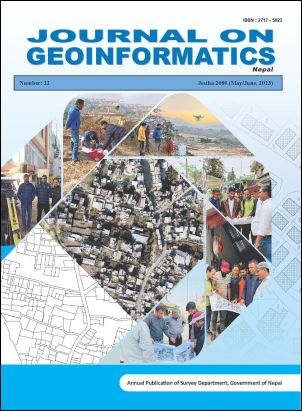Can GNSS Derived Height Replace Levelling Height? - A Case of Low-Land of Nepal
DOI:
https://doi.org/10.3126/njg.v22i1.55120Keywords:
GNSS derived orthometric height, GNSS, geoid, precise levelling, ellipsoidal heightAbstract
Orthometric height is the generally adopted type of height worldwide and in geomatics community. Precise levelling has been the method of obtaining orthometric height in past for most of the country, so as the Nepal. However, due to wide usage of Global Navigation Satellite System (GNSS), the alternative approach of combining GNSS derived ellipsoidal height with geoid undulation to get GNSS derived orthometric height, has been used extensively. In Nepal, this technique was officially adopted in 2020 for Everest height measurement and understood as the efficient way to comply with levelling height. In this study, GNSS surveying was conducted on 15 stations located at the lowland region of Nepal and orthometric heights were obtained from GNSS and geoid method. When compared GNSS derived orthometric height with precise levelling height, the difference remained within threshold of 5cm for majority of observation stations. However, these differences are not sufficient to support the standards set for the third order levelling by Survey Department (SD). The accuracy of GNSS derived orthometric height can be significantly affected by various environment and existing resources such as existing accuracy of geoid, nature of precise levelling height. Considering the revisit upon these conditions, we expect GNSS-levelling as a strong alternative to time consuming, tedious, and costly precise levelling which is most suitable method of obtaining orthometric height in lowland topography at a precision less than 4 cm.




